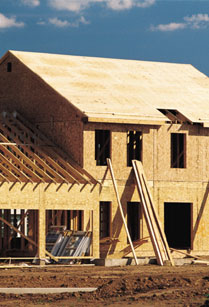
CNBC aired a brief interview with the
National Association of Realtors President, Thomas M. Stevens on Wednesday morning in which it was revealed that Stevens has had his home on the market for roughly a year.
Aside from appearing uncomfortable, Stevens seemed slightly at a loss for words, attempting to explain his own personal experience of the housing slowdown with some frail reasoning concerning his traveling and being unable to follow the good advice of his Realtor.
It seems that, with this questioning, CNBC was only following up on an article that ran in the Washington Post the prior Saturday entitled “A Humbling Lesson for Realtors' President” which recounted essentially the same details.
In that article, Stevens seems to express the sentiment of a novice seller rather than an industry veteran when recounting his experience.
"Who knew last September how long this down trend was going to continue," Going on Stevens states "You need to adjust the price. . . . But I didn't do that. And my house is still on the market."
"What I should have done, was listened to my agent and cut the price by $50,000 to $100,000 early on, and the property would have sold last October."
Better yet "I should have listed it a month earlier,"
The house, located at 10897 Woodleaf Lane, in Great Falls, Virginia, was constructed by the Stevens’ in 1980 and was their first house after they married.
The ZipRealty.com listing [UPDATE: Looks like the ZipRealty Listing has now been removed!... Heres the link at Realtor.com instead] sheet shows that this 4 bedroom, 3.5 bath brick colonial with “exceptional room sizes” and “easy commuting” has, in fact, been on the market for over 350 days with an unchanged listing price of $1,450,000.
Additionally, the Zillow.com estimate on the house ranges from $1,371,963 - $1,608,000 while 5 suggested comparables, all having sold within the last 11 months, ranged between $1,175,000 and $1,300,000 yielding an average selling price of $1,280,000.
Furthermore, in an ironic twist, it seems that Stevens home is facing some pricing competition from a truly gargantuan McMansion two doors down at 10890 Woodleaf Lane.
That house, a 7900 square foot “goliath” colonial which boasts a marble foyer, granite kitchen, whirlpool tub and even an indoor tire swing, has been listed for 193 days being reduced from its original list price of $1,950,000 to its current price of $1,775,000.
That’s a relatively slim 18% difference in list price for a home that is 18 years newer, has an additional bath and nearly twice the internal area. In addition, the McMansion owner has been recently reducing the list price by increments of $100,000 so it seems that a showdown may be immanent.
Yet, Stevens is most likely not overly concerned about this sale as he and his wife Lindy have been preoccupied the past few years remodeling their new, and truly spectacular home located in Vienna, Virginia.
Their new home, officially know as “The Windover House”, was purchased “off market” (i.e. inside sale with no marketing) in 2001 by the Stevens who beat out four other prospective buyers eventually paying $1,300,000 for the 4400 square foot antique farmhouse known locally as “Big Yellow”.
Apparently, a significant factor in Stevens winning the bidding process was that he agreed to not split up the 1.7 acre lot that the home stands on into parcels to sell individually thus maintaining the integrity of the “Windover Heights Historic District”.
Interestingly, the Windover Heights Historic District has become a hotbed of controversy lately with significant disagreement between various owners and townspeople over the role of historic preservation.
There are various meeting minutes, articles and even a blog and youtube.com clips chronicling the feisty events of the historic town planning commission.
It seems that, with their extravagant renovations of “Big Yellow”, Tom and Lindy Stevens have thrust themselves into the melee, having their home cited on many occasions as an example of inconsistent application of commission rules.
The following is an excerpt from the commissions meeting minutes of 05/07/2003:
Mrs. Stich wanted to know why certain people are allowed to build extra garages or porches to their homes, noting that when plans were submitted to the WHBR in 1979 for a three (3) car garage to the house she presently lives in, they were denied.
Mrs. Stich said in her four (4) years living in the district, she has noticed the inconsistencies and hypocrisies in the WHBR.
Mrs. Stich stated that the historic district has nothing to do with “citizenry or caring about the small Town feel effect”, because if it did the people who are fighting to keep the district would be fighting for preservation and mentioned Mr. Henon who lived at 130 Pleasant Street, NW, who had to see the big addition going up at 316 Windover Avenue, NW and didn’t blame him for selling his house.
Mrs. Stich stated the WHHD is full of inconsistencies.
So there it is, Housing slowdown, old home not selling, pricing pressure from outlandish McMansion, multi-year renovation of new home, angry new neighbors… Given the circumstances, it’s hard to not have some sympathy.
 In an attempt to become the “Ted Turner” of the Housing Bubble Blogesphere I give you BNN! The Bubble News Network!
In an attempt to become the “Ted Turner” of the Housing Bubble Blogesphere I give you BNN! The Bubble News Network! 



















